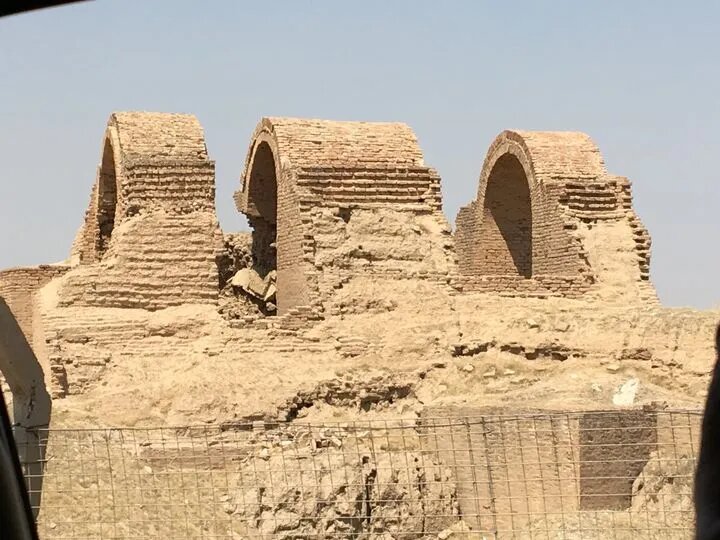5,000-year-old Assyrian city of Ashur at risk of sinking

TEHRAN – A number of Iraqi researchers have warned that the ancient city of Ashur could be slowly sinking into the ground as a result of dam construction.
Iraq, which is facing a threat to its water supply as a result of the ongoing climate crisis, considers the possibility of breaching a new dam that could flood the 5,000-year-old Assyrian city of Ashur that just reopened to the public earlier in April, IRNA reported.
The Makhoul dam is situated roughly 25 miles from Ashur, which, according to some experts, would not only flood it, along with more than 200 other heritage sites but would also displace up to 250,000 people currently living in the area.
Ashur was built on the banks of the Tigris River—in what is now Iraq—more than 5,000 years ago. It was once the power base of the Assyrian empire, encompassing Mesopotamia, Anatolia, and some of what is now Egypt, Turkey, Jordan, Lebanon, and Syria. Today, Ashur’s temple still stands, a crumbling ziggurat rising 85ft above the Tigris. It was once more than twice the height, covered in iron and lead and studded with crystals.
“The impact of the dam’s construction has not been sufficiently studied, and to date there have been no social or environmental impact surveys carried out,” Khalil Aljbory, an academic researcher at Tikrit University, said in a statement released by the Iraq NGO Liwan, Art News reported on June 20.
Heritage professionals are currently negotiating with the Iraqi government to preserve the monuments as well as the homes of those who live nearby, the report said.
Moreover, the ancient city has faced destruction twice: by Babylonian forces some 600 years before the birth of Jesus Christ and in 2015, at the hands of Isis.
During its heyday, the inner core of Ashur was protected by encircling walls nearly 4 km long. On the eastern side Ashur was washed by the Tigris, along which massive quays were first erected by Adad-nirari I (reigned c. 1295–c. 1264). On the north side an arm of the river and a high escarpment afforded natural defenses, which were augmented by a system of buttressed walls and by a powerful sally port called the mushlalu—a semicircular tower of rusticated stone masonry, built by Sennacherib and probably the earliest known example of this type of architecture. The southern and western sides were protected by a strong fortification system.
According to Britannica, a catalog of Ashur’s buildings inscribed during the reign of Sennacherib (704–681) lists 34 temples, although fewer than one-third of them have been found, including those of Ashur-Enlil, Anu-Adad, Sin-Shamash, and Ishtar and Nabu. Historically the most interesting temples are those devoted to the cult of the goddess Ishtar, or Inanna, as she was known to the Sumerians.
In addition to the temples, three palaces were identified. The oldest of these was ascribed to Shamshi-Adad I (c. 1813–c. 1781) and was later used as a burial ground. Many of the private houses found in the northwestern quarter of the site were spaciously laid out and had family vaults beneath their floors, where dozens of archives and libraries were uncovered in the course of the German excavations. The irregular planning of the town indicates strict respect for property rights and land tenure. Other aspects of Assyrian law, particularly those relating to women, are known from a series of tablets compiled between 1450 and 1250.
Ashur was made a UNESCO World Heritage site in 2003.
AFM
Leave a Comment